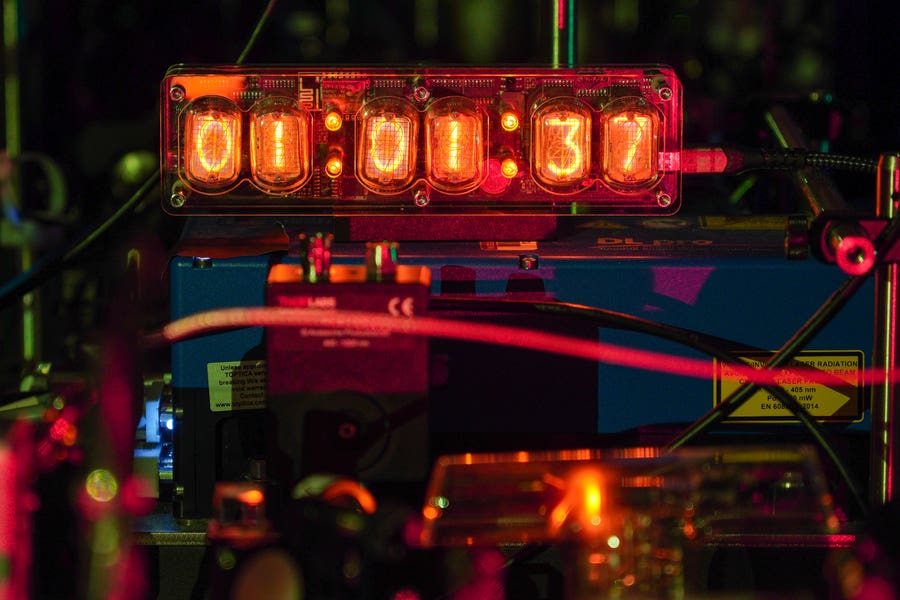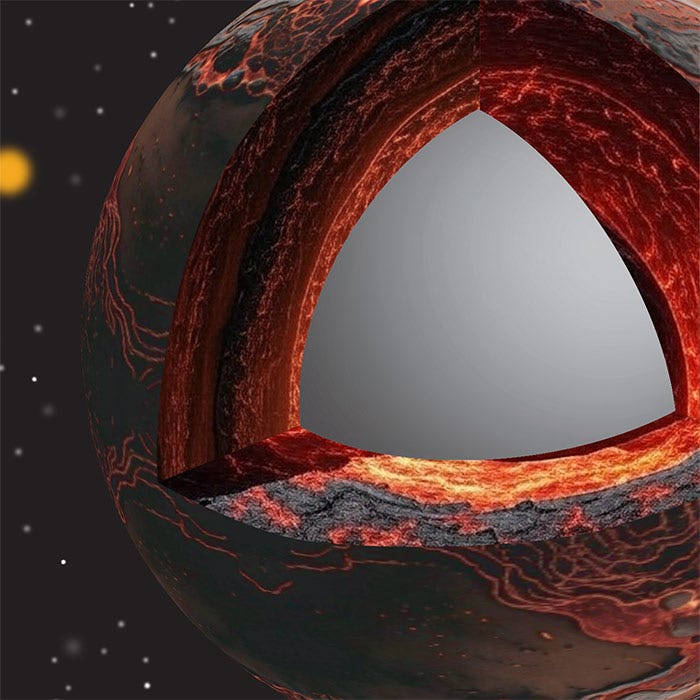MIT and Harvard break quantum limit with world’s most accurate optical clock
MIT and Harvard physicists break the quantum limit in optical clocks, doubling precision with quantum amplification and entanglement.

MIT and Harvard scientists have built the world’s most precise optical clock, surpassing the quantum limit with entangled atoms and quantum amplification. (CREDIT: Ryley McConkey)
Every second of modern life runs on precision — from GPS navigation to the time signals that keep the internet in sync. But scientists at MIT and Harvard have just taken precision to an entirely new level. They’ve built a system that breaks through the long-standing standard quantum limit, redefining how accurately time can be measured.
Their innovation, known as quantum-amplified global-phase spectroscopy, or simply quantum GPS, uses quantum entanglement to make optical lattice clocks even more precise. These clocks, which already measure time so accurately they’d lose less than a second over the age of the universe, now tick with sensitivity beyond anything achieved before.
Pushing Past the Quantum Barrier
Every time measurement faces an invisible wall called the standard quantum limit (SQL). This boundary is set by the fundamental randomness of quantum mechanics — the unavoidable “quantum noise” that creeps into every observation. Even in perfectly isolated atoms, this noise limits how precisely scientists can measure their energy or frequency.
Optical lattice clocks have already reached that quantum limit. They rely on atoms like ytterbium or strontium that tick up to 100 trillion times per second under the steady pulse of laser light. These are the most accurate timekeepers ever built, helping test Einstein’s theory of relativity, monitor Earth’s gravity, and even search for dark matter.
But the MIT-Harvard team wasn’t satisfied with that boundary. They wanted to go beyond it — toward the Heisenberg limit, where measurement uncertainty drops with every entangled atom. The challenge has always been producing and maintaining large-scale entanglement without disrupting the delicate quantum state.
By developing a clever workaround, they found a way to amplify quantum information without measuring every atom individually. Their approach combines entanglement, geometric phase control, and a trick called time-reversal amplification to boost measurement precision well beyond the standard quantum limit.
Seeing Time Through a New Lens
Traditional optical clocks measure time by comparing how laser light interacts with atomic transitions — essentially, how far off the laser’s frequency is from the atom’s natural “resonance.” The MIT-Harvard technique flips that idea on its head.
Instead of counting shifts in atomic populations, the new method tracks a global phase — a kind of geometric memory that atoms retain even after returning to their original energy state. This phase is represented as an area traced on a “Bloch sphere,” a visualization of atomic spin states.
Lead researcher Leon Zaporski explains that this global phase holds valuable information about the laser’s frequency. “The laser ultimately inherits the ticking of the atoms,” he says. “But in order for this inheritance to hold for a long time, the laser has to be quite stable.”
Using this global-phase information, the team found they could amplify tiny frequency differences — the heartbeat of the atomic clock — and measure them far more precisely than before.
The Power of Quantum Amplification
Here’s where quantum amplification comes in. The researchers began by creating a “squeezed” quantum state, one that reduces uncertainty in one variable (such as phase) by increasing it in another (like amplitude). After probing the atoms with laser light, they reversed the squeezing process, amplifying the phase signal while reducing noise.
This time-reversal technique, also known as one-axis twisting, produces entanglement among thousands of ytterbium atoms trapped in a light-based lattice. Each atom behaves like a pendulum ticking in sync, collectively amplifying the signal.
In their experiments, the researchers achieved a 2.4-decibel gain in precision beyond the standard quantum limit — roughly a 70 percent reduction in uncertainty — and a 4-decibel improvement in laser noise stability. These gains may sound small, but in metrology, they’re extraordinary.
Building the Clock of the Future
To pull this off, the scientists cooled ytterbium-171 atoms with lasers and trapped them in a grid of light known as an optical lattice inside a high-finesse cavity. A combination of green and yellow lasers, along with radio-frequency pulses, manipulated the atoms’ spin states.
The design canceled out many sources of experimental noise. Rotary echoes, or sequences of control pulses, helped average out unwanted variations. Encoding the phase across two nuclear spin states also suppressed laser noise — one of the main challenges in modern atomic clocks.
The entire setup allowed the atoms to work collectively rather than individually, making the system both more stable and easier to scale.
A Decade of Quantum Progress
This breakthrough didn’t happen overnight. In 2020, MIT physicist Vladan Vuletić and his team showed that entangling atoms could improve atomic clock precision by redistributing measurement noise. Two years later, they refined the process with time reversal, a way to boost weak signals by entangling and then “de-entangling” atoms.
Their latest work brings these ideas together at optical frequencies — where ytterbium atoms tick about 10,000 times faster than the microwave-based cesium atoms used in today’s time standards.
“When you have atoms that tick 100 trillion times per second, that’s 10,000 times faster than microwaves,” Vuletić explains. “We didn’t know how to apply our previous methods to optical clocks that are much harder to keep stable.”
The answer, it turned out, was hidden in the global phase — once thought to be irrelevant. The researchers discovered that even when atoms return to their starting energy, they keep a trace of the laser’s influence, like a fingerprint of the frequency difference.
Twice the Precision, Endless Possibilities
With their quantum-amplified method, the team doubled the clock’s precision — resolving twice as many “ticks” per second compared to conventional systems. That level of improvement could reshape how we define time itself.
“We saw that we can now resolve nearly twice as small a difference in the optical frequency,” says Zaporski. “Although it’s a hard problem in general to run atomic clocks, our method makes it easier — and we think this can enable stable, transportable clocks.”
These portable optical clocks could one day leave the lab to measure phenomena across Earth and space — from detecting subtle gravitational shifts to testing whether the universe’s fundamental constants change over time.
Practical Implications of the Research
This new form of quantum GPS isn’t just about keeping better time. It opens doors for precision sensing across science and technology. Portable optical lattice clocks could help detect gravitational waves, monitor tectonic activity, and improve the accuracy of global navigation systems.
Because the method suppresses laser noise and scales easily, it could also make future quantum sensors — for magnetism, gravity, or acceleration — more robust and practical. These advances could refine navigation, advance fundamental physics research, and lead to breakthroughs in communications, geophysics, and even earthquake prediction.
As Vuletić puts it, “With these clocks, people are trying to detect dark matter and dark energy, test whether there are just four fundamental forces, and even see if these clocks can predict earthquakes. We think our method can help make these clocks transportable and deployable to where they’re needed.”
You might not notice it when you check your phone or use GPS, but the heartbeat of the future may depend on these entangled atoms — ticking together in quantum harmony, measuring time with unmatched precision.
Research findings are available online in the journal Nature.
Related Stories
- Is interstellar object 3I/ATLAS an alien probe? Harvard physicist sparks debate
- Scientists link dark energy to alien life in the multiverse
- Scientists propose simple new way to spot alien life in the universe
Like these kind of feel good stories? Get The Brighter Side of News' newsletter.
Shy Cohen
Science & Technology Writer



